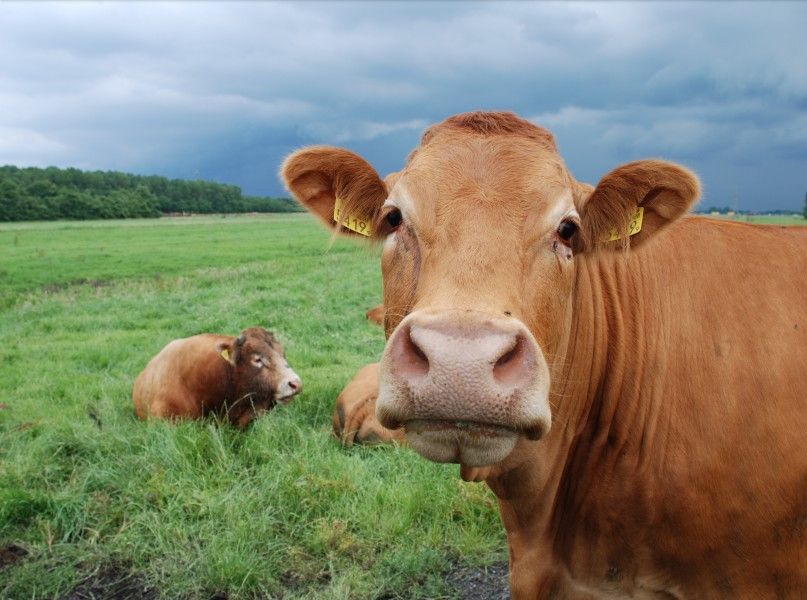On Monday, the negotiations of the 950-page farm bill finally come to a close, and leaders of the House and Senate are ready to vote.
The leaders of the House and Senate Agriculture Committees, Representative Frank D. Lucas, Republican of Oklahoma, and Senator Debbie Stabenow, Democrat of Michigan, gave the go ahead to have the bill voted upon by the House and Senate. House and Senate members, farmers, and welfare advocates are excited to move forward, as it’s been more than two years past the date previously set for the bill.
Here’s the gist of the bill from the Washington Post’s Ed O’Keefe, who summarized it best:
The agreement cuts about $19 billion in farm programs, including the end of direct payments to farmers — some of whom weren’t actually farming at all. The program has existed since the 1990s and has been singled out by President Obama and members of both parties in recent years as a prime example of government inefficiency. Another $6 billion will be saved by cutting from 23 to 13 the number of conservation programs operated by the Agriculture Department and its agencies. Another $8 billion will be saved by closing loopholes and ending other misuse of the food stamp program, formally known as the Supplemental Nutrition Assistance Program. Supporters said the measure will slash billions of dollars and help support 16 million jobs in the agriculture industry — making it the only bipartisan, money-saving jobs bill to pass Congress in recent years.
The vote from the House is expected on Wednesday, with the Senate to follow.
The big hot-button issue of the bill is the negotiation around food stamp cuts. The bill proposes a one percent cut to current food stamps—this kind of cut is considered too high for liberals in the Senate, and too low for conservatives in the House.
But, there are still significant changes to who can receive food stamps. “The bill also for the first time establishes pilot programs to encourage food stamp recipients to seek jobs and bars USDA from using money to recruit new beneficiaries or to advertise the program on television, radio and billboards,” said the Washington Post. After years of many abusing the program, the USDA is using measures to “ensure that illegal immigrants, lottery winners, college students and the dead cannot receive food stamps and that people cannot collect benefits in multiple states.”
Still, all House and Senate members are not satisfied.
“Many Senate Democrats are likely to be unhappy with the food stamps measure,” said NYT’s reporter Ron Nixon, “which cuts roughly twice as much as senators approved in May.”
Simultaneously, House Republicans are saying the cuts are too low. House Speaker John Boehner, R-Ohio, simply called the bill “a positive step in the right direction.” Many are still concerned that the House will not get enough votes to pass the bill.
The bill still subsidizes America’s staple crops: corn, soybeans, wheat, rice and cotton. But, the bill is now “shifting many of those subsidies toward more politically defensible insurance programs,” according to the HuffPo. “That means farmers would have to incur losses before they received a payout. While those subsidies may be easier to defend, they may not cost less money. Subsidies for cotton and rice would be higher, and more money would be directed to the national crop insurance program.”
Additionally, the bill creates an entirely new subsidy system for dairy farmers. The notable change is that the program would not include a “stabilization program” that essentially determines production cuts during periods of oversupply.
“The idea was to break the cycle in which milk prices drop and farmers produce more to pay their bills, flooding the market and forcing prices down further,” said the HuffPo. “But House Speaker John Boehner, R-Ohio, strongly opposed the stabilization idea, calling it “Soviet-style.””
Many in the meat industry are also concerned that the bill doesn’t properly address some of the labeling regulations they fear over the next few years. Meat and poultry advocates said they will vote against the bill, as “the heads of the agriculture panels did not include language to delay a labeling program that requires retailers to list the country of origin of meat,” according to HuffPo. “Meatpackers say it is too costly for the industry and have fought to have the program repealed in the farm bill.”
While not all are pleased, many are pleased that the bill—no doubt a compromise and a document with significant change—is moving forward.
“The bill is a compromise,” said Ray Gaesser, President of the American Soybean Association, to the NYT. “It ensures the continued success of American agriculture, and we encourage both the House and the Senate to pass it quickly.”
FEATURED PHOTO: http://www.foodandwaterwatch.org




